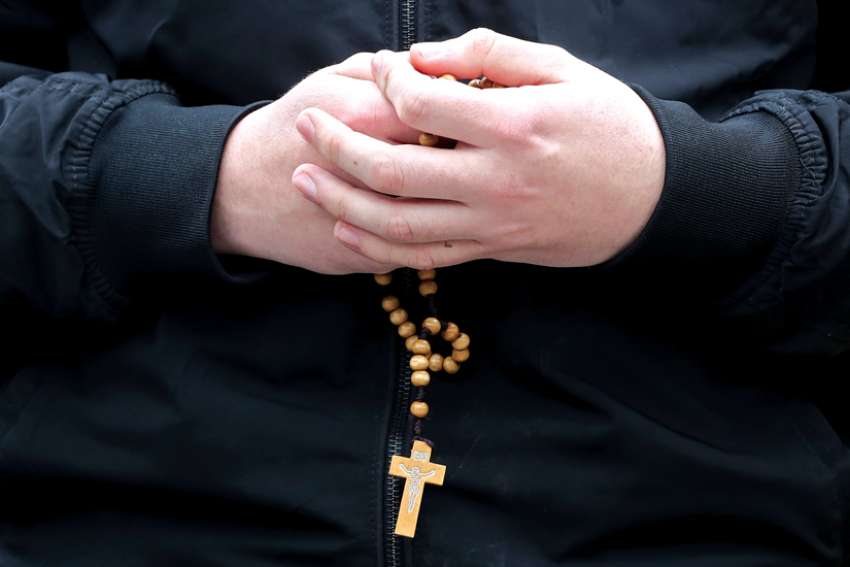Well, a lot of converts — perhaps male converts in particular — have been known to take their sweet time in twigging to the pivotal importance of Our Lady in the grand salvific scheme of things as well. And as the rosary was the Holy Mother’s unique gift to the Church in the second millennium (and, of course, is built around the recitation of 15 decades of Hail Marys) it really is quite inextricably linked to her.
Then, when a modern-day male convert notices that it is predominantly women who take part in the rosary devotions at his parish church, that inextricable link starts to look like it might be an exclusive link as well.
Of course, nobody will stop him if he should take out his beads and pray along as well. But the appearance of things suggests that, by and large, the rosary is an instrument and a practice that is especially attuned to the spiritual temperament of ladies.
Yet in spite of my bewilderment about who the rosary was for, I’ve carried one in my pocket for almost the entirety of my life as a Catholic. And whenever it broke, I would pass its pieces over to the dextrous hands of my agnostic wife for repair, hoping that — hey, she’s a woman — contact with it might somehow incline her heart. And perhaps it did. When she finally did come into the Church five years ago, I gave her a rosary of her own but, alas, couldn’t offer to reciprocate her restorative work.
Though I didn’t know how to make proper use of my rosary all those years when it jangled along with a ring of keys in my left front pocket, there was for me a sort of talismanic reassurance when I would blindly push the keys aside and finger my way along a section of beads to the crucifix.
I related like crazy when I read English writer and artist Caryll Houselander’s (1901-54) account of an incident that occurred during the wartime blitz of London:
“The other day I saw a person suffering badly from shock who caught sight of my rosary, which I pulled out of my pocket while searching for something else; she seized it, and although she had only the vaguest idea of the significance, she became calm at once, like a miracle; she asked me to explain it, but she was not in a state of mind capable of taking in a whole explanation. I told her simply that it is a form of prayer which reminds one of all the landmarks in Christ’s life from before His birth until after His death and it gives them to us ‘arranged,’ so to speak, by His Mother. She listened only very slightly and kept saying, ‘Well, it is something to hold on to!’”
In an instinctive bid last summer when the Church was being swamped by the latest waves of scandal, I startled myself when I was in the eucharistic queue one Sunday and did not hold out my hands in my customary way but instead received the Host on my tongue. I have kept that up ever since and see a more diligent use of the rosary as part of the same strategy to draw closer, to deepen my practice, when I feel I’m being pushed away from the Church.
A book that has greatly assisted me in making the rosary a part of my daily routine is Champions of the Rosary: The History and Heroes of a Spiritual Weapon (2016) by Fr. Donald H. Calloway of the Marian Fathers of the Immaculate Conception.
No, it is not an elegantly written tome, but as the title vividly suggests, Calloway’s exhaustive study emphasizes the inspiration that the rosary has provided in the lives of men over the last 800 years.
For this man, at least, the real key has been to not regard the rosary as a prayerful resource to draw on when the spirit moves me (or when I happen to come upon it in my pocket) but as an obligatory spiritual weapon or instrument that has to be practised every day whether I feel like it or not. Like Sunday Mass, I may not feel much like it when I haul myself off to church, but I never regret it on the walk back home.
(Goodden is a writer in London, Ont.)


